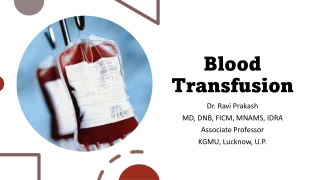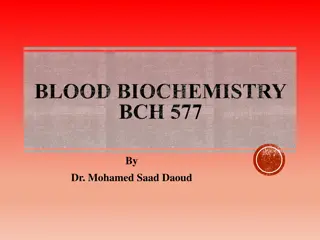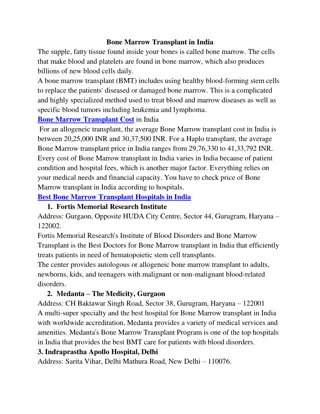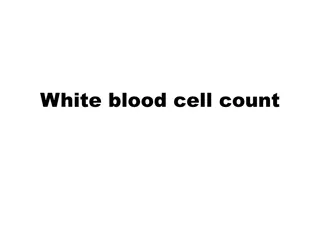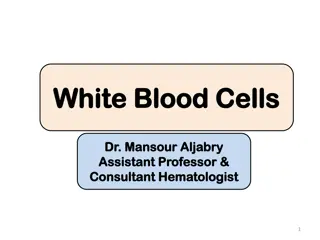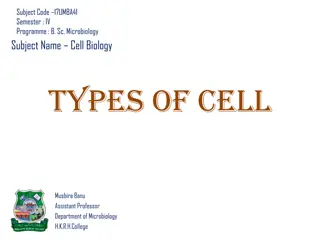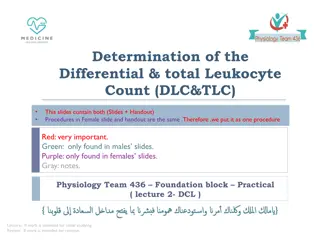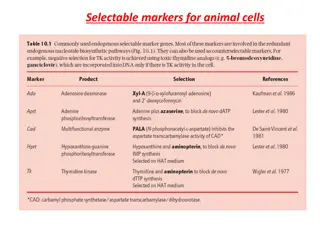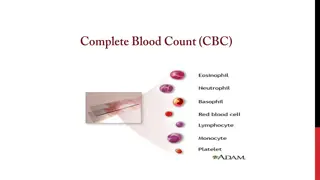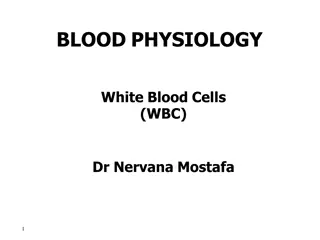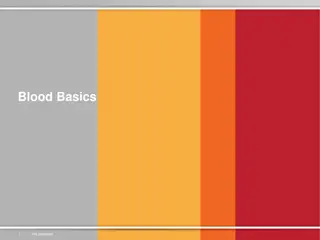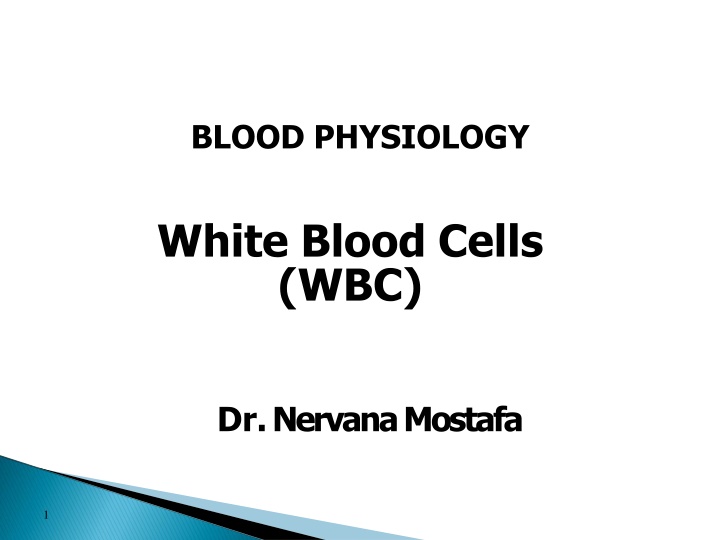
White Blood Cells in Blood Physiology
Explore the formation, types, functions, and lifespan of white blood cells (WBCs) as essential components of the immune system, with detailed insights on granulocytes, monocytes, and lymphocytes. Learn about key processes like phagocytosis and the sites of WBC formation in bone marrow and lymphoid tissues.
Download Presentation

Please find below an Image/Link to download the presentation.
The content on the website is provided AS IS for your information and personal use only. It may not be sold, licensed, or shared on other websites without obtaining consent from the author. If you encounter any issues during the download, it is possible that the publisher has removed the file from their server.
You are allowed to download the files provided on this website for personal or commercial use, subject to the condition that they are used lawfully. All files are the property of their respective owners.
The content on the website is provided AS IS for your information and personal use only. It may not be sold, licensed, or shared on other websites without obtaining consent from the author.
E N D
Presentation Transcript
BLOOD PHYSIOLOGY White Blood Cells (WBC) Dr.NervanaMostafa 1
Lecture content 1. Formation of WBC 2. Types of WBC 3. Genesis, sites of formation and life span of WBC 4. Neutrophils formation, maturation and function 5.Phagocytosis 2
red blood cells (5-6-million /ml) white blood cells (5000/ml) 3
White Blood Cells Leucocytes Formed in bone marrow & lymph tissue Protection against infection by: Phagocytosis Secretion of antibodies WBC = 4000 11000/ml 4
Types of WBC 1. Granular (polymorphnuclear PMN): Neutrophil 62%. 10-16um, lobulated nucleus 2-5, purple cytoplasmic granules Eosinophil 2.3%. 12-18um, 2 lobe nucleus, coarse red granules Basophil 0.4%. 10-14um, rarely segmented nucleus, nucleus hidden by large round bluish granules 5
Types of WBC cont. 2. A granular Monocytes 15-20um, kidney shape nucleus Lymphocyte 30% round nucleus small (5-8um) large (9-15um) 5.3% 7
Genesis of WBC Two major lineage of WBC are formed: 1. Myelocytic: granular,monocytes 2. Lymphocytic: lymphocytes 9
Sites of WBC Formation sites of WBC formation Granulocytes (neutrophil, basophil, eosinophil) in bone marrow Monocytes- bone marrow lymphocytes- bone marrow, thymus, lymphoid tissues 11
Life span of WBCs Granulocytes= 4-5 days in tissues, During infection life span only few hours because they die after ingesting bacteria. Monocytes = 10-20- hours then they leave blood to tissues transform into macrophage, its life span goes up to months. Lymphocytes = weeks to months according to its type 12
White Blood Cells NEUTROPHILLS 13
Formation and Maturation of Neutrohils Formed in Bone Marrow Stem cells Myeloblast Promyelocytes Neutrophil myelocytes Young neutrophil metamyelocytes Band neutrophil Polymorphnuclear neutrophil (Mature Neutrphils released to blood) 1. 2. 3. 4. 5. 6. 7. 14
Neutrophil Function Defense against infection: Neutrophil has the ability of engulfing bacteria or organism by a process of phyagocytosis Steps of Phygocytosis 1 Chemotaxis 2 Margination 3 Diapedesis 4 Ameoboid movement 5 Engulfing and killing of a microbe 16
Chemotaxis, margination & diapedesis Dr Sitelbanat 2011 17
Chemotaxis The attraction of the neutrophils to inflamed area following chemotactic substances release from infected site: Chemotactic substances: Bacterial toxin Degenerative products of inflamed tissue Complement system Reaction product of plasma clotting 18
Margination & Diapedesis WBC marginate along the wall of blood capillaries WBC squeezes itself through endothelial holes leaving blood capillaries (diapedesis) WBC move by amoeboid motion towards inflammation area following chemotactic substance released from site of infection Upon reaching the site of infection neutrophils start to engulf infecting organism 19
Phagocytosis Selective process: foreign substance recognize by: 1. Rough surface 2. No protective protein coat, which prevents phagocytosis Marked by certain substance e.g Complement 3 or antibodies making them ready for killing a process known as opsonization Neutrophils encircled the bacteria with pseudopodia and engulf it inside into a vacuole (phagosome), takes 3-20 bacteria 3. 21
22 Dr Sitelbanat 2011
Microbial killing Digestion of organism inside the phagosom Fusion of intracellular lysosomes with phagosome vacuole Lysosomes discharge its proteolytic enzymes such as myeloperoxidase, catalase into the vacuole, killing and digesting the engulfed bacteria. And or Release of bactericidal such as superoxide, hydrogen peroxide to kill the bacteria 23
Microbial killing 24 Dr Sitelbanat 2011
Objectives At the end of this lecture student should be able to: 1. Describe different Types of WBC 2. Recognize the general functions of WBC 3. Describe genesis and site of formation of WBC. 25
Objectives At the end of this lecture student should be able to: 4. Describe stages of neutrophil formation 5. Describe the role of neutrophils in defending the body against infection 6. Describe the process of phagocytosis. 26

